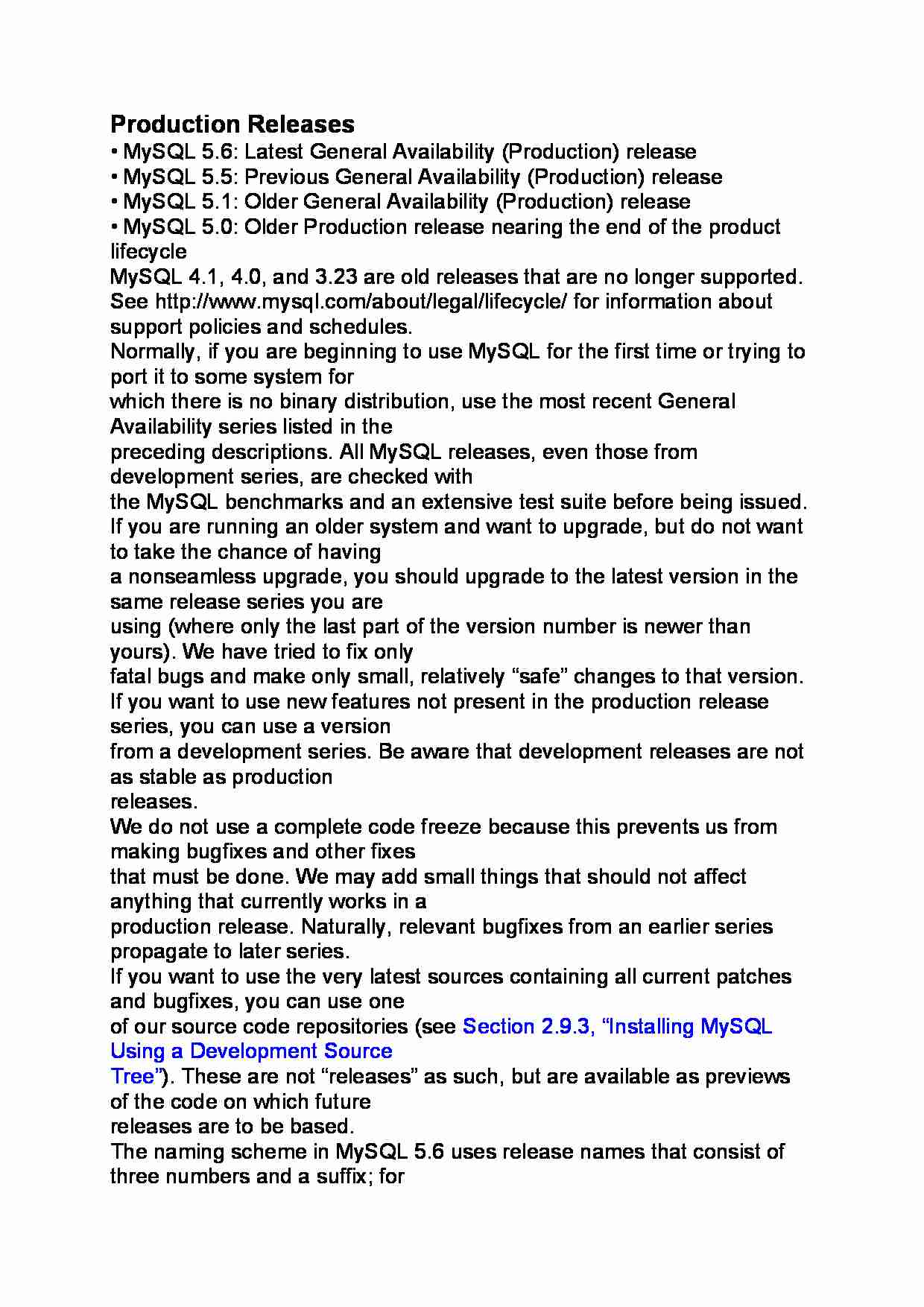To tylko jedna z 2 stron tej notatki. Zaloguj się aby zobaczyć ten dokument.
Zobacz
całą notatkę


Production Releases
• MySQL 5.6: Latest General Availability (Production) release
• MySQL 5.5: Previous General Availability (Production) release
• MySQL 5.1: Older General Availability (Production) release
• MySQL 5.0: Older Production release nearing the end of the product lifecycle
MySQL 4.1, 4.0, and 3.23 are old releases that are no longer supported.
See http://www.mysql.com/about/legal/lifecycle/ for information about support policies and schedules.
Normally, if you are beginning to use MySQL for the first time or trying to port it to some system for
which there is no binary distribution, use the most recent General Availability series listed in the
preceding descriptions. All MySQL releases, even those from development series, are checked with
the MySQL benchmarks and an extensive test suite before being issued.
If you are running an older system and want to upgrade, but do not want to take the chance of having
a nonseamless upgrade, you should upgrade to the latest version in the same release series you are
using (where only the last part of the version number is newer than yours). We have tried to fix only
fatal bugs and make only small, relatively “safe” changes to that version.
If you want to use new features not present in the production release series, you can use a version
from a development series. Be aware that development releases are not as stable as production
releases.
We do not use a complete code freeze because this prevents us from making bugfixes and other fixes
that must be done. We may add small things that should not affect anything that currently works in a
production release. Naturally, relevant bugfixes from an earlier series propagate to later series.
If you want to use the very latest sources containing all current patches and bugfixes, you can use one
of our source code repositories (see Section 2.9.3, “Installing MySQL Using a Development Source
Tree”). These are not “releases” as such, but are available as previews of the code on which future
releases are to be based.
The naming scheme in MySQL 5.6 uses release names that consist of three numbers and a suffix; for
example, mysql-5.6.1-m1. The numbers within the release name are interpreted as follows:
• The first number (5) is the major version and describes the file format. All MySQL 5 releases have
the same file format.
• The second number (6) is the release level. Taken together, the major version and release level
constitute the release series number.
• The third number (1) is the version number within the release series. This is incremented for each
... zobacz całą notatkę




Komentarze użytkowników (0)